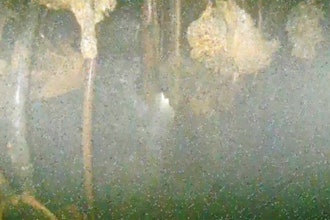The need for a secure and reliable energy supply is a seldom mentioned but very important driver for many nations moving towards clean and renewable energy supply. Paradoxically, the very factors that have made many nations dependent on imported energy, like being surrounded by water, can work to their benefit since many island nations have great potential for marine energy.
Those of us who remember the oil crises in the ’70s, when OPEC strangled oil supply to the Western world and drastically raised the price of oil, do so with a shiver. Price controls, rationing, long petrol queues, cold buildings and switched-off streetlights are some mementos. Many economists blame the oil embargo for the near decade long recession in the 70’s.
Most countries in the world are still net importers of energy. The USA, Japan and Europe are hugely dependent on imported energy. Out of the 27 European Union countries, 26 are net importers. And as their own natural resources are becoming depleted, the dependency is increasing in many countries, not decreasing. The EU’s import dependency was 54 percent in 2010, compared to 40 percent in the 1980s.
A disturbingly large number of nations are almost completely dependent on energy imports. In this motley group we find countries like Luxemburg, Cyprus, Malta, Morocco, Singapore, Taiwan, Hong Kong, Puerto Rico, the Maldives, Ireland, South Korea and many Pacific Islands. Many of these nations are geographically isolated (e.g. island nations) and also poor, adding insult to injury.
Having to import all or most of the energy needed to meet the national demand is not only expensive — it also has a number of other disadvantages:
- Much of the imported energy tends to be coal, oil and diesel which is “dirty” energy, and causes increased greenhouse effect.
- The importing nations become very vulnerable to price fluctuations on the world market. Price fluctuations for fossil fuels can have a critical effect on countries that import most of their primary energy.
- The energy importing nations become highly exposed to supply disturbances for a wide range of reasons, from piracy acts to logistical malfunctions like burst pipes, late vessels, bad weather etc.
- They also become exposed to political decisions and pressure, not only from the energy exporting nations but also from the international community (e.g. the international embargo on Iranian oil).
Many of the energy importing countries are desperately seeking alternatives. The good news is that renewable power production has a great potential to partially or completely replace imported energy and eliminate most or all of the disadvantages mentioned above in many countries. Access to inexpensive and secure local energy can be an enabler of growth in developing countries — it creates jobs that have to be carried out locally.
Marine energy can supply over 50 per cent of South Korea’s energy needs
Some nations are well positioned to use a multitude of renewable energy — like solar, wind, biogas and marine energy — combined to achieve a clean, safe and reliable power supply. Some island nations in the tropics have an abundance of sun and also tidal and ocean currents nearby from which energy can be harvested, which can contribute to a diversified energy mix. Tidal and ocean currents are highly rich in energy; a water current of 1.5m/s contains as much kinetic energy as a wind blowing 40m/s.
Let us look at an example: South Korea has a vulnerable energy system and imports 85 percent of its energy, much of it coal and uranium. Recent events in South Korea stress the urge to increase the country’s security of energy supply. In August, two power plants malfunctioned at the same time, while six nuclear plants were out of operation for a variety of reasons. The result: electricity shortages during a period of extreme heat.
But South Korea has a long coastline with energy-rich ocean and tidal currents, and ocean energy is identified as a key area for public investments and stimulations. Estimates show that South Korea can potentially and realistically harvest half of the energy the country needs from the surrounding oceans. The country has a strong political will, which has become even stronger due to the recent events, to increase the local renewable energy supply, and programs are in place to support this development.
Another concrete example is Ireland. This island nation imports 86 percent of the energy it consumes, according to the World Bank. But as it happens, the Irish waters are especially promising for marine energy. There are many energy-rich high and low velocity tidal currents and a great wave climate surrounding the island. UK and Ireland can provide 25-50 percent of total European marine energy, according to a report from RenewableUK. These countries are well aware of this potential and encourage the development of marine energy.
Underwater kite increases the global marine energy potential
One highly promising marine power plant is Deep Green, an “underwater kite” that is undergoing an extensive test programme in the waters off Strangford Lough in Northern Ireland. This marine power plant is the only available technology that cost-effectively produces electricity from slow tidal and ocean currents. The amount of energy that is possible to harvest from tidal and ocean currents is greatly increased when low velocity currents are included. In addition, tidal and ocean currents can produce valuable base load supply in the power grid, which makes it possible to replace e.g. nuclear power.
Advocates for non-renewable energy sources often state that renewable energy sources are too intermittent and lack reliability, since they depend on weather conditions to produce electricity (i.e. there will be periods when they cannot supply energy). This is not true for tidal and ocean current energy — the currents are highly predictable and stable.
These examples prove that marine energy and other renewable energy sources are not only a pipe dream. Safe and reliable energy sources are of high strategic value. Global investments in renewable energy have increased by over 520 percent from 2004 to 2012, totalling more than $240 billion in 2012. Many nations can move away from unsustainable energy import dependency to a healthy and secure supply of clean energy — good not only for them but for the entire planet.
Anders Jansson is co-founder and CEO of Minesto, an energy technology company in the field of marine energy, with a patented and proven technology (Deep Green) to harvest energy from low velocity tidal and ocean currents. He has eight years of experience from developing and commercialising marine energy technology, both as an entrepreneur and business leader with a background from Chalmers University of Technology. See http://www.minesto.com/.






















